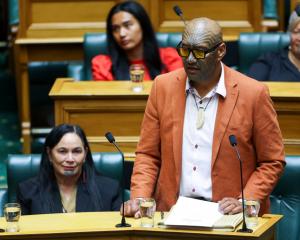Australia is burning.
Our closest neighbour, our friend and ally, our sporting foe and nemesis, with whom we share so much history and culture, is suffering through one of its worst bushfire seasons on record.
It would be easy, on this side of the Tasman Sea, for us to shrug off Australia’s plight, suggest bushfires are “their thing”, just like we have to deal with different natural disasters, such as earthquake and flood.
But the scale of the fires affecting several states, particularly New South Wales, Queensland, South Australia and Western Australia, is, according to some on the front lines, unprecedented. Even more alarming, the bushfire season still has several months to run and has not yet reached its traditional late summer peak.
New Zealanders have already experienced first-hand a taste of the Australian fires, courtesy of this month’s frequent northwesterly winds.
Smoke high up in our skies has turned usually brilliant blue sky pale and murky, added vivid orange and brown colouring to clouds and sunsets, and affected air quality, exacerbating for some their asthma or other respiratory problems.
Dust from Australia’s long-standing drought and ash from the fires have also been deposited on southern snowfields, staining them red, pink and black.
Of course, these are merely minor irritations and discomforts compared with the death and destruction the fires have caused across the Tasman and the hell unleashed on some communities.
So far nine people are known to have been killed by these horrific fires. Thousands of homes have been destroyed and five million hectares of land has burnt, leaving innumerable mammals, birds, reptiles and insects dead or injured.
The Blue Mountains and its residents have been especially hard hit, and there are concerns for the survival of the ancient Wollemi pines in their secret location.
The smoke from fires in inland New South Wales has blanketed Sydney and coastal settlements — the cloying, claustrophobic brown haze causing air pollution greater than 10 times more hazardous to human health than the recognised threshold of harm.
It is true bushfires have always been part of life in rural Australia. Eucalyptus trees have evolved to depend on fire for their regeneration, their seed pods needing intense heat to open.
What is different now is how early this bushfire season started, how many hectares of the country are burning and how much closer to major cities many of the fires are.
Those with a handle on reality recognise the fingerprints of climate change all over this unfolding disaster. Unfortunately, Australian Prime Minister Scott Morrison and some of his Liberal Party colleagues either fail to understand the situation or largely choose not to.
Australia remains extremely “ungreen” and has a government more interested in the economy than the environment or climate change. Greenhouse gas emissions and a warming climate are, to them, inconvenient truths.
After all, much of Australia’s economy is based on highly environmentally dubious extractive industries. The lucky country is the world’s largest exporter of coal and the third-largest exporter of all fossil fuels, behind Russia and Saudi Arabia.
The fact Mr Morrison would go on holiday to Hawaii while fires were roaring through New South Wales, only returning after the deaths of two volunteer firefighters, speaks volumes.
Next to the amazing Aussie volunteer firefighters, the country’s true heroes, these prevaricating Liberal politicians look pitiful and pathetic.
We need to remember scrub and forest fires are also part of the New Zealand scene. There have been highly damaging fires in recent years across several South Island regions, and climate change projections suggest in future there will be many more.
The trouble in Australia is the heat is never far away from returning. Cool, rainy changes are few and far between in the summer months and have been especially so over the past few years.
Next time rain foils your summer plans, think of those across the Tasman — particularly the everyday heroes risking their lives to save their communities — who would give anything for a decent downpour.












